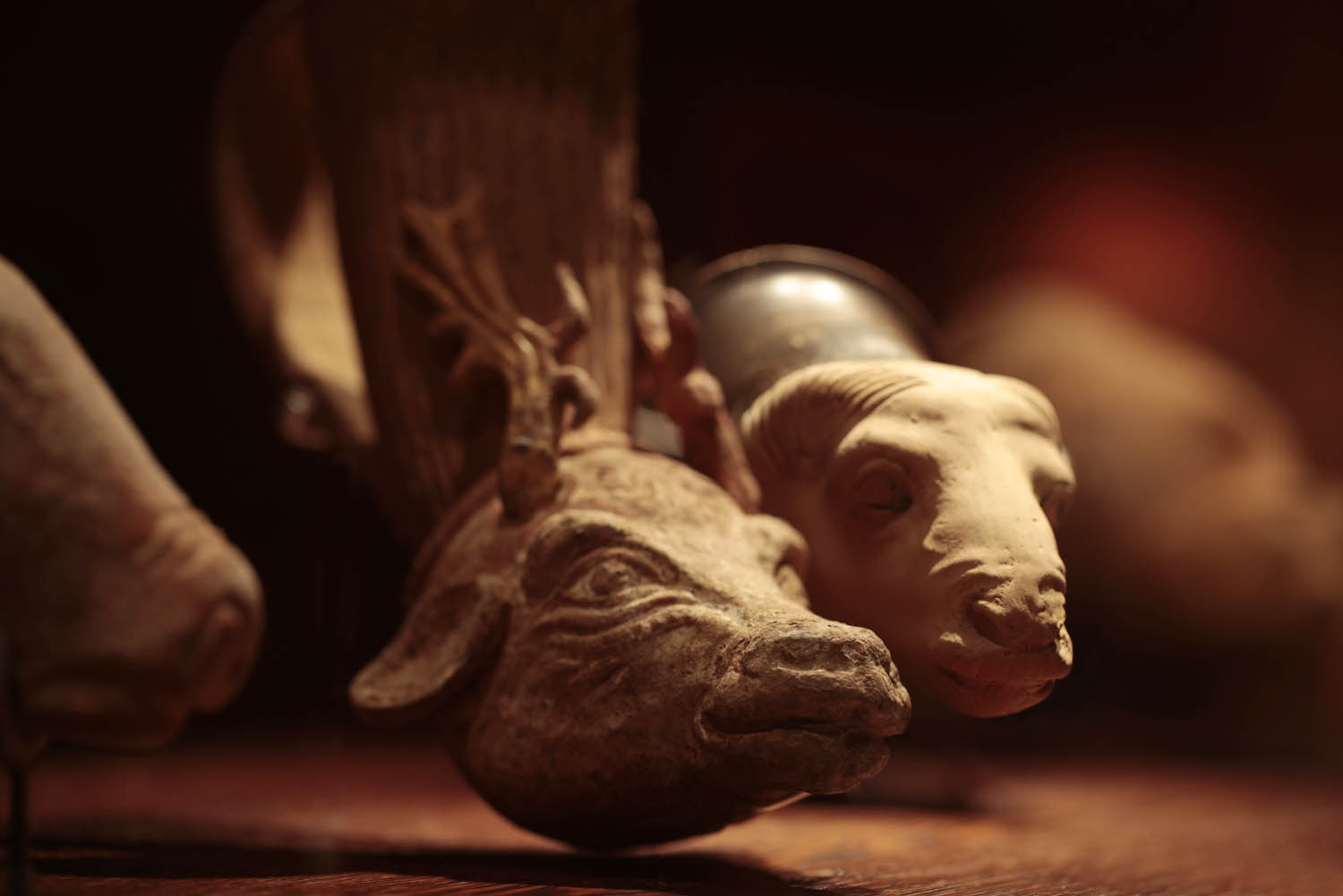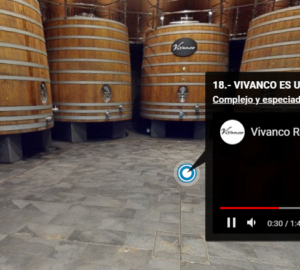Sharing and drinking wine with a bear, a deer, a bull or a camel is possible. Let's see why.
If you are an archaeology enthusiast, you will surely have had the chance to take a close look at classical Greek vases in a museum. You will probably have noticed that many of them are decorated with Dionysian scenes in which the protagonists carry a kind of cornucopia from which liquid flows, or from which they drink directly: these are the ritons.
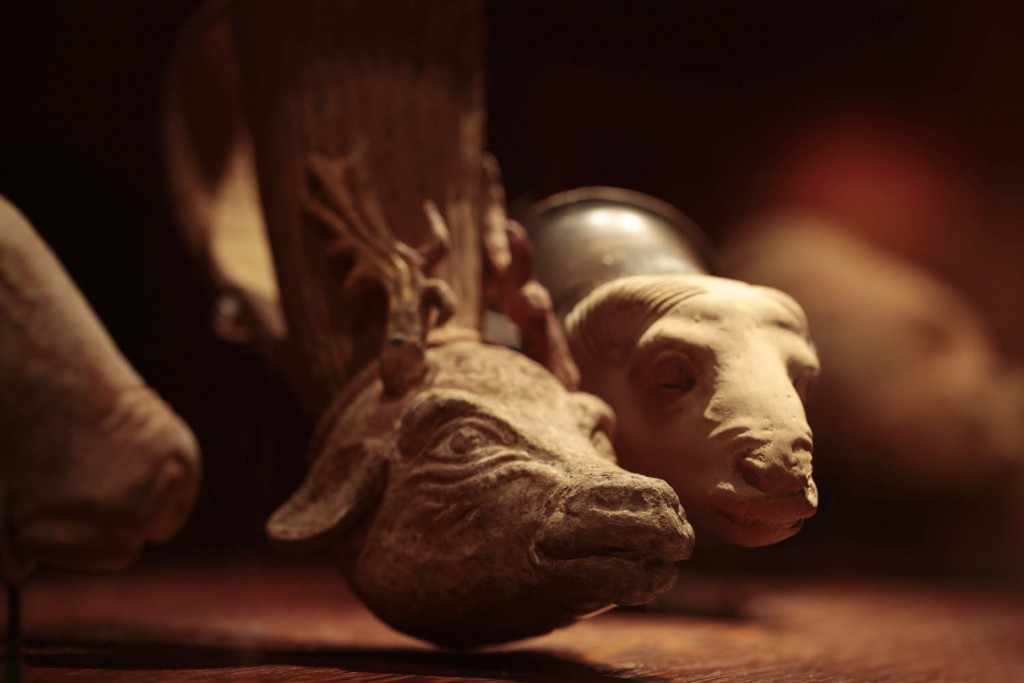
These curious vessels in the shape of a horn or animal head, of great aesthetic beauty, were used in antiquity for drinking wine, in funerary rites and for making offerings to the gods. In particular, they were used in libations, which was the ritual of pouring liquid on the altar or in a kind of dish, the fiale or pátera, in the course of a religious ceremony, a symposium or banquet, or a solemn act. Some sources claim that the ritons may have been part of the funerary offerings.
These objects have a wide mouth at the top, a small hole at the bottom through which the liquid flowed, which was closed and opened with the fingers, and one or two handles on the sides. Depending on the type of rite, they contained milk, pure wine or mixed with water and honey, although originally the blood of animals sacrificed in honour of the gods was used.
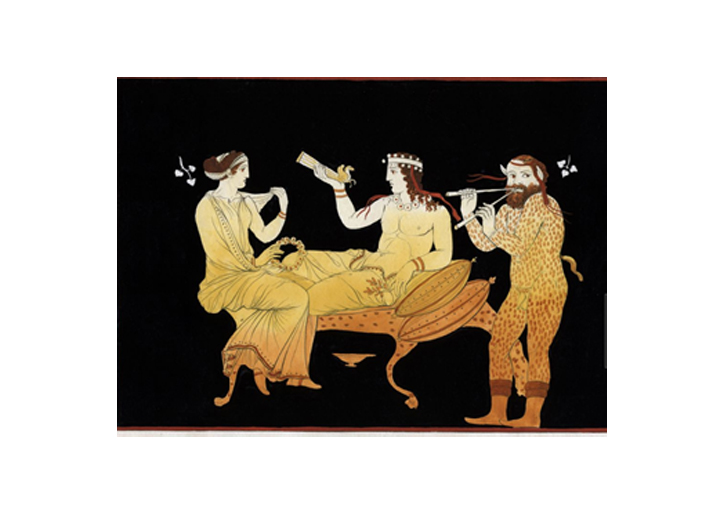
Where do the rhythons come from?
Originally from Persia, where they were made of precious metals and stones, their use became widespread in Greece from the 5th century B.C. onwards, at the end of the Medical Wars between the Persian Empire and the Hellenic city-states.
Instead of metal, the Greeks used a more modest material to model them: clay. The result was particularly interesting when they depicted heads of wild animals (and not so wild animals): bears, wild boars, dogs, camels, deer, calves, bulls... This last form gives us a clue as to their possible use in funerary rites linked to the cult of Dionysus. The bull was one of the symbols of the Greek god of wine. In the libation, Dionysus himself, incarnated in the wine, was offered to the other gods. It would seem logical to think that a bull motif on the rithon would have been intended to evoke this deity.
By the 4th century BC we find rythons decorated with overtly sexual scenes. A common theme in the characteristic Greek red-figure pottery is that of the satyrs, mythological creatures who formed part of Dionysus' retinue. Depicted with horns and goat-like lower limbs, they were as fond of drunkenness as they were of orgies. Thus, in many of these pieces, these satyrs are depicted amidst rhythons and erect penises.
At present...
Thanks to museums and private collectors, these peculiar objects have survived to the present day. One of them was Sir William Hamilton, British diplomat, archaeologist, antiquarian and vulcanist... and also famous for a more prosaic reason: the relationship that his young wife Emma, with his approval, had with Admiral Nelson ..... During his stay at the court of Naples from 1764 to 1800 as ambassador to Britain, he had the privilege of studying in depth the newly discovered ruins of Pompeii in 1748, and of starting a fantastic collection of Greek and Roman antiquities. Among his most outstanding pieces were five rhythons in the form of bear, dog, horse, boar and bovid heads.
We can find excellent examples from different periods in the Museum Vivanco of the Wine Culture of Briones, La Rioja. Of particular note is the one in the form of a camel or dromedary lying on its front legs. It belongs to the Hachamanid Period, in the 6th century BC. There is also a ram's head, in which the neck has been used to form the vessel, at the end of which is the dark-brown pouring spout. It is dated to the 4th century BC, in the Classical period.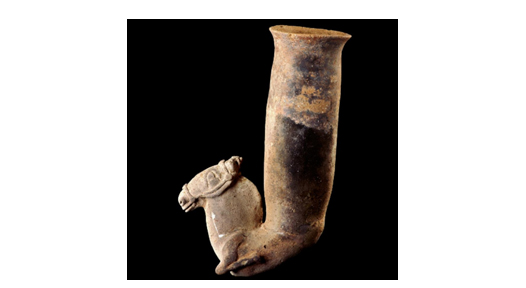
In Spain, we can also admire several notable examples in the National Archaeological Museum. One of them is by the so-called Painter of Tarquinia, a renowned Athenian artist who was active in the first half of the 5th century BC. It is moulded in the form of a polychrome bull's head. The scene that decorates the neck, executed with red figures, depicts a symposium involving a hetero or courtesan, and two young men.
Also in our Wine Documentation Centre you can see some examples of classic rhythons.
So much for the history of these unique objects linked to the culture of wine which, according to some, could be the origin of our popular "porrón" ....
If you are more of a listener than a reader, you can listen to the podcast of the post, broadcast on Radio Nacional: http://www.rtve.es/alacarta/audios/vivanco-compartiendo-cultura-del-vino/
If you liked it share it on your social networks 😉






